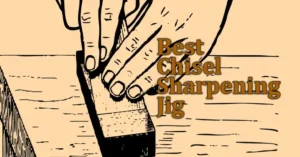How to Use a Wood Chisel isn’t just something you learn once—it’s a skill that improves every time you pick up the tool. Wood chisels are the secret weapon of master woodworkers. From carving joints to shaping edges and even repairing old furniture, the right chisel technique can take your work from rough and unfinished to clean, professional-quality results.
In this guide, you’ll learn easy, step-by-step methods that show you how to handle a wood chisel the right way. We’ll cover everything from grip and angle to safety tips and common mistakes to avoid. Whether you’re just starting out or looking to sharpen your technique, this is your go-to guide for better woodworking.
What Is a Wood Chisel?
A wood chisel is a tool with a sharp metal blade and a handle. It is used to cut, shape, or carve wood. You can use it to clean joints, carve edges, or remove wood layers.
Common Types of Wood Chisels
There are various type wood chisels for different type chisel. Here include common 3 types of wood chisels:
- Bench chisels: All-purpose for chopping and paring.
- Mortise chisels: Thick blades for carving joints.
- Paring chisels: Long, thin blades for detail work.
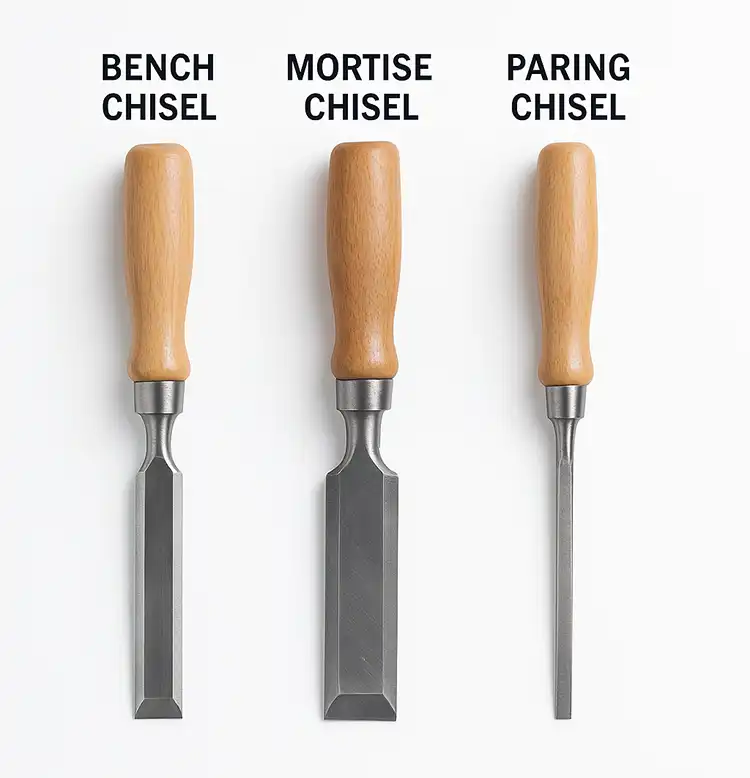
Chisel Safety Essentials Tips
- Always chisel away from your body
- Use sharp tools only—dull blades are dangerous
- Wear goggles to protect your eyes
- Wear safety glasses to block flying wood chips.
- Clamp your workpiece to prevent slipping.
- Keep hands behind the blade—never push toward sharp edges.
Sharpening Your Chisel (5-Minute Prep)
A dull chisel is dangerous and inefficient. Here’s how to sharpen it:
- Use a honing guide to hold a 25° angle on a sharpening stone.
- Slide the blade forward 10 times, then flip to polish the back.
- Test sharpness: Shave a paper edge smoothly.
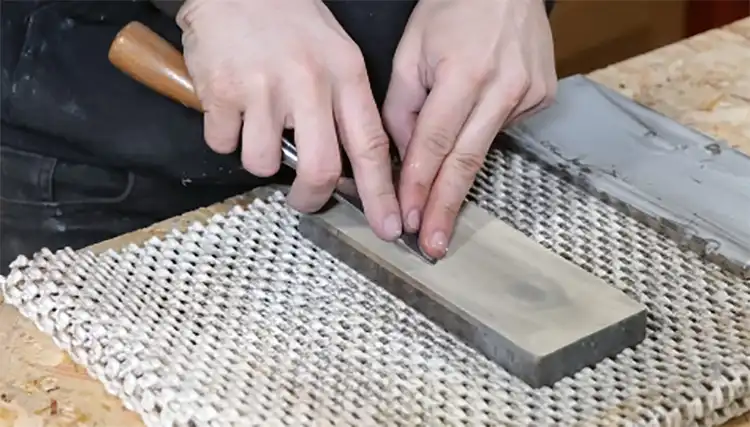
Check Price on Amazon: Best Sharpening Stone for Chisel
How to Use a Wood Chisel: Step-by-Step Chiseling Techniques

Learning how to use a wood chisel is a great skill for any beginner. This simple tool helps shape and smooth wood with precision. In this guide, you’ll learn safe and easy wood chisel techniques for great results.
Tools You Need
Before starting, gather these items:
- A sharp wood chisel
- A rubber or wooden mallet
- A clamp to hold the wood
- Safety goggles
- A pencil or marking knife
How to Use a Wood Chisel: Step-by-Step
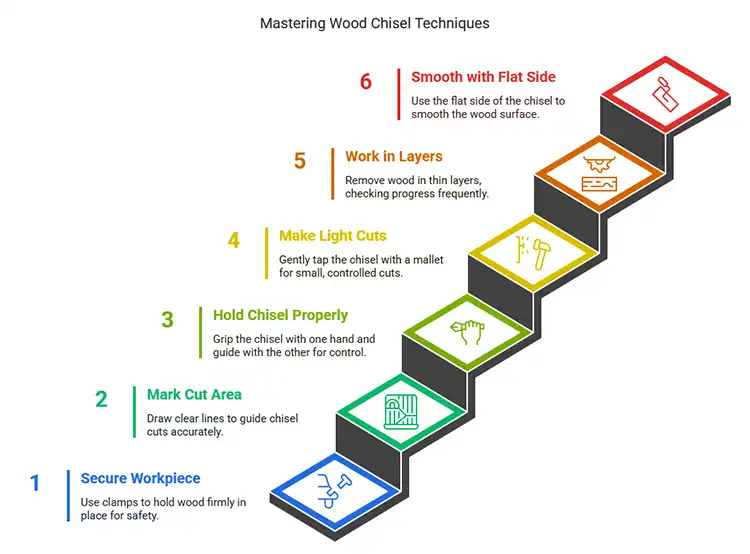
1. Secure Your Workpiece
Use a clamp to hold your wood in place. The wood should not move while you chisel. This keeps your hands safe.
2. Mark the Area to Cut
Draw clear lines where you want to chisel. A marking knife or pencil works well. This helps guide your chisel for clean cuts.
3. Hold the Chisel Properly
Grip the handle with one hand. Place your other hand near the blade for better control. Keep the flat side of the blade facing the wood you want to keep.
4. Make Light Cuts
Use a mallet to gently tap the handle. Take small cuts at a time. Always cut in the direction of the wood grain for smooth results.
5. Work in Layers
Don’t try to remove a lot of wood at once. Chisel in thin layers. Stop and check your progress often.
6. Use the Flat Side to Smooth
After rough cuts, flip the chisel so the flat side is down. Gently scrape the wood surface for a clean finish.
Common Mistakes to Avoid
- Cutting across the grain
- Using too much force
- Not clamping the wood
- Holding the chisel the wrong way
- Skipping safety gear
Practice Makes Perfect
The more you practice, the better your skills will get. Start with softwood and simple cuts. As you learn how to use a wood chisel, you’ll get cleaner and more accurate results.
Using a chisel for woodworking is simple once you know the steps. Keep your tools sharp, work slowly, and follow safety tips. With time and care, you can master basic chisel techniques and create beautiful wood projects.
Pro Tips for Flawless Results
- Follow the grain: Chisel downhill to avoid splintering.
- Use a guide block: Clamp scrap wood to create straight edges.
- Check depth: Stop and measure often with a ruler.
Fixing Common Mistakes
- Tear-out: Apply masking tape over the cut line before chiseling.
- Uneven depth: Sand the surface with 120-grit sandpaper.
- Stuck blade: Wiggle the chisel sideways—don’t pry.
Maintenance & Storage
- Wipe blades with an oiled rag after use to prevent rust.
- Store in a dry place—hang handles or use blade guards.
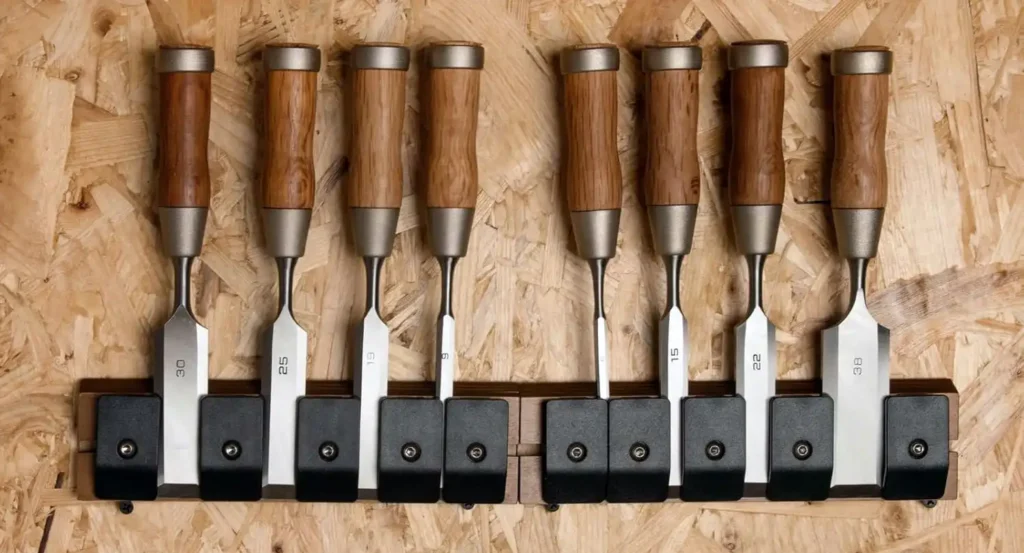
Check Price on Amazon: Best wall mounted chisel organizer
Final Though
Learning how to use a wood chisel takes time, patience, and practice. But with the right techniques and a focus on safety, you’ll quickly gain confidence and control. Always keep your tools sharp, your hands steady, and your mind focused on the task. Whether you’re crafting fine furniture or doing simple repairs, using a chisel the right way can make all the difference.
Keep learning, keep practicing, and most of all—enjoy the process. Every cut brings you one step closer to mastering the art of woodworking.
Ready for more? Check our guide: Wood Chisels 101: How to Choose, Use & Buy Like a Pro
FAQs: How to Use a Wood Chisel
Q: What is the proper way to use a wood chisel?
A: Secure workpiece, mark cuts, push paring chisels by hand, tap chopping chisels with a mallet, cut with the grain, remove thin layers.
Q: What are the rules when using a chisel?
A: Wear safety gear, cut away from your body, use a wooden mallet, keep blades sharp, never pry.
Q: What is the correct angle for a wood chisel?
A: Bench: 20°–25°, mortise: 25°–30°, paring: 15°–20°. Use a honing guide.
Q: Can I use a hammer instead of a wooden mallet?
A: No—hammers can damage chisel handles. Use a rubber or wooden mallet.
Q: How often should I sharpen my chisel?
A: Sharpen when cuts feel rough or require extra force.
Q: Best wood for beginners?
A: Softwoods like pine or basswood are forgiving and cheap.


